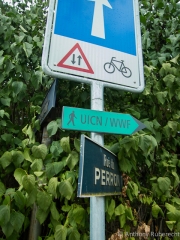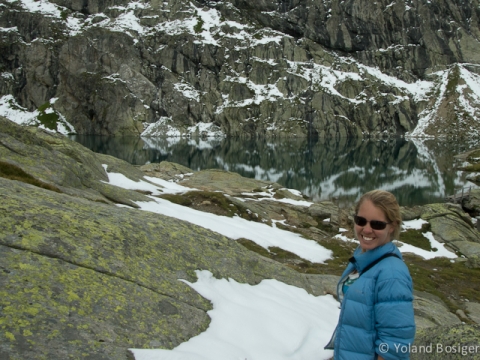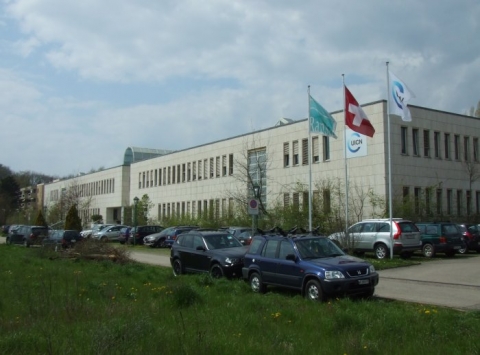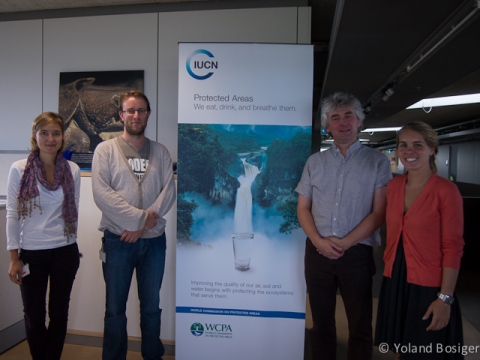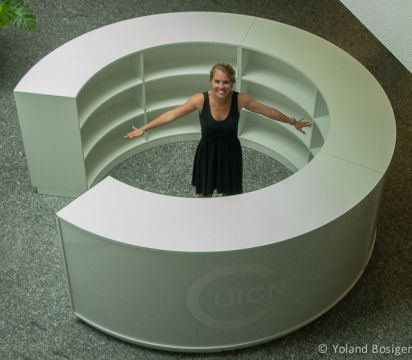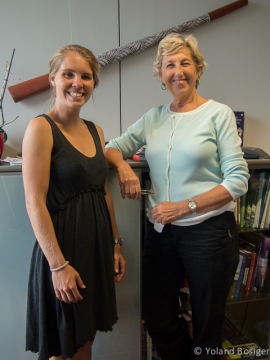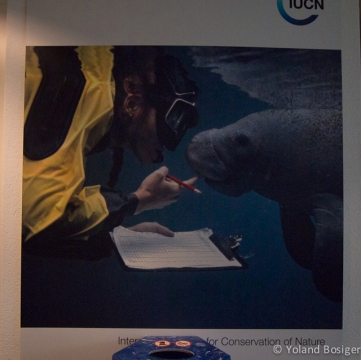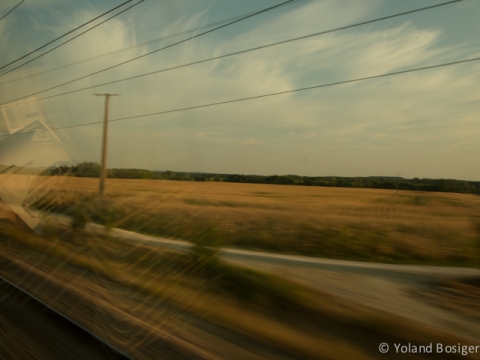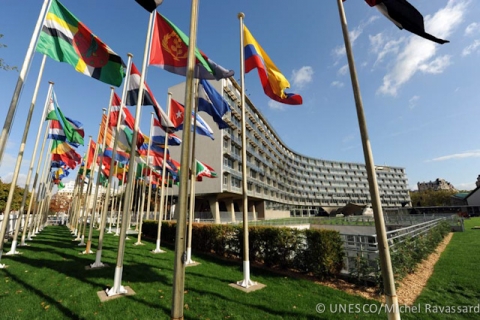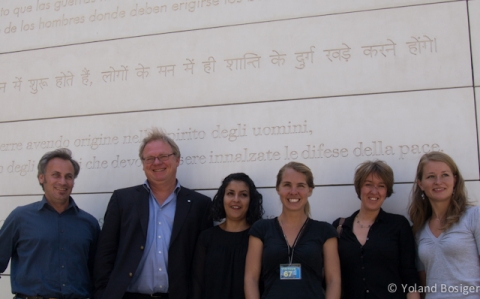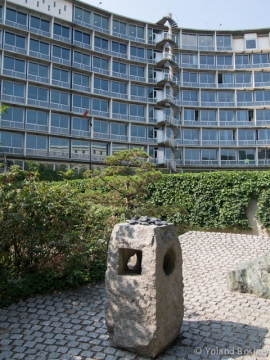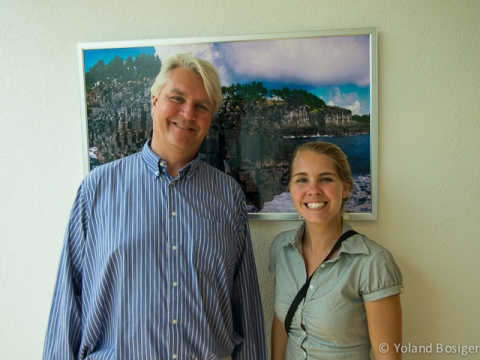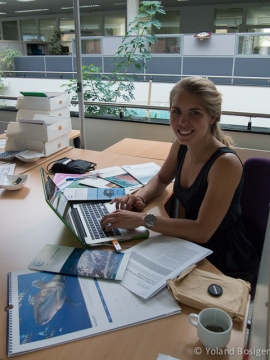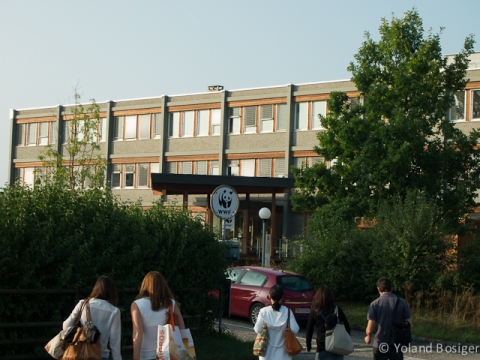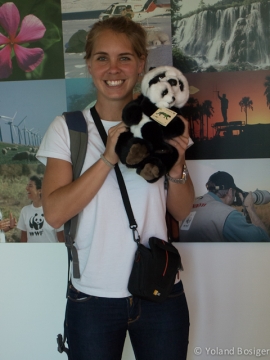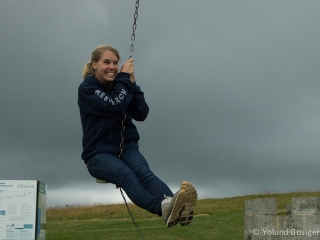Have you ever wondered what international conservation organisations actually do? Or have you ever seen logos such as IUCN, WWF, WCS or CI on pamphlets and wondered what their involvement was? And have you ever contemplated what it would be like to work in a conservation organisation but not really known how particular associations differ from one another? Well as someone who has asked all these questions, I was determined to use my Scholarship year to find out.
There are at least 40 international organisations which strive to protect and conserve the marine environment but given my limited time, I had to be content with visiting just three. Geneva in Switzerland is a hub for international conservation headquarters so off I went despite the obvious incongruity of visiting a country completely landlocked. Ask any Swiss though and they will furiously defend their country, “Switzerland has beautiful lakes… don’t forget we have lakes!!”
I began my Swiss adventure by volunteering for two weeks at the International Headquarters for the IUCN (International Union for Conservation of Nature) in Geneva. The IUCN is the oldest and largest conservation organisation in the world with literally thousands of field projects and activities. Unlike many other conservations groups, the IUCN is unique in that it is a UNION; a neutral forum for governments, non government organisations, companies, scientists, and local communities to develop and implement policy, laws and best practice solutions. The IUCN itself has three levels of participation: member organisations (made up of states and non government organisations), voluntary scientists and experts grouped into six commissions, and the professional Secretariat (made up of over 1000 staff in 60 different countries). The IUCN congress held every four years, has over 8000 attendees and given my timing (just two weeks before the current 2012 congress in Jeju), I got to experience the full congress preparation craziness.
The IUCN World Heritage Programme, led by Tim Badman was my first stop at the IUCN but before I go any further I am going to try explain a bit about the World Heritage process (definitely took me a little while to get my head around).
So the primary role of the IUCN World Heritage Programme, is to coordinate IUCN’s work on the United Nations Educational, Scientific and Cultural Organization (UNESCO) World Heritage Convention. What is the World Heritage Convention? It is visionary document with the mission to identify and protect the world’s natural and cultural heritage considered to be of Outstanding Universal Value. Each year the World Heritage Committee at UNESCO (consisting of representatives from 21 state parties to the convention) meets and decides on which properties (nominated by the individual states parties) will be inscribed on the World Heritage List. In order to make an informed decision, those state representatives need be given advice and this is where the IUCN comes in.
As the technical advisory body to the World Heritage Committee on all natural World Heritage Sites, The IUCN World Heritage Programme has three main roles:
- To evaluate all natural and ‘mixed’ sites nominated for World Heritage Status, and contributes to evaluations of certain cultural landscapes.
- To monitor the state of conservation of existing World Heritage Sites; and
- To contribute to capacity building, training and related initiatives
At the World Heritage Programme I worked on a range of topics, from researching management plans pertaining to different World Heritage areas to helping put together pamphlets for the Go4BioDiv congress, which is a youth meeting occurring every two years in conjunction with the Conference of the Parties of the Convention on Biological Diversity (CBD-COP). Young people from different countries around the world are chosen to represent their region at the congress and this year the theme was “Conserving coastal and marine biodiversity for sustaining life and livelihoods”. The Go4BioDiv conference is a fantastic opportunity for young people to speak out on issues they are passionate about, meet new people and get experience at a United Nations level meeting. If anyone wants more information for 2014 let me know and I will put you in contact with some of the organisers.
On the recommendation of Tim Badman, I then took a brief break from my work at the IUCN to visit UNESCO in Paris and particularly Fanny Douvere, coordinator of the World Heritage Marine Programme (WHMP).
I think I am probably one of the few people EVER to visit Paris simply to see UNESCO but I was super exited all the same (what a nerd!). After successfully navigating my way into the UNESCO building, I met Fanny and was given lots of information about the WHMP. There are currently 46 Marine World Heritage Sites with a new addition of the Rock Islands Southern Lagoon in Palau just this year – (have a read of my IUCN blog).
So how does the WHMP fit into the process? The main purpose of the WHMP is to raise awareness of World Heritage Convention as a framework for protecting marine areas. Compared to terrestrial ecosystems, the concept of Marine World Heritage is still not well known and so the WHMP is working hard to raise awareness of its value for ocean conservation. Related to this goal, the WHMP also assists member states to nominate marine areas for World Heritage status. The WHMP is hence a crucial and significant programme essential for the further protection of marine ecosystems.
In the afternoon, I got to spend some time with international lawyer and World Heritage Marine Programme assistant, Agne Bartkute. Agne was fabulous to talk to and was instrumental in helping me get my head around the World Heritage Process. We visited the meeting halls where member states commit to different targets and goalsm and also headed around the grounds where many of the member countries have donated different statutes and monuments to UNESCO. I had a brilliant time at UNESCO and thank everyone so much for having me.
Back in Switzerland, it was time to shift my expertise to the IUCN Global Marine and Polar programme led by Carl Gustaf Lundin (IUCN GMPP) (PS, I sincerely apologies for all the acronyms but I fear this blog would be impossibly huge without them!). I said goodbye to the World Heritage Programme and headed off to learn more about the diversity of GMPP’s projects. The GMPP operates in over 25 different countries on a variety of levels from local fishermen to decision-makers in the United Nations General Assembly.
Although it may be possible to stop destructive industries from operating in important marine areas, the best we can often hope for is that companies conduct operations in an ecologically sustainable way. During my time at the IUCN GMPP, I learned a lot about a company called Sakhalin Energy, which conducts drilling and prospecting within the feeding grounds of endangered western Pacific grey whales. Together, the IUCN and Sakhalin Energy have partnered to create the Grey Whale Advisory Panel (WGWAP), which makes recommendations about how Sakhalin Energy should conduct its operations to minimise the environmental impact on grey whales. So far the programme been a great success and thoroughly I enjoyed learning about it.
The international headquarters of the World Wildlife Fund for Nature (WWF) is a convenient 10 min walk from the IUCN in Gland and so visiting was a must. Directed by John Tanzer (previous Great Barrier Reef Marine Park Authority Director) the WWF uses an ecosystem based management approach to create, promote, and implement solutions to protect marine ecosystems. WWF is a member of the IUCN and interestingly enough, started out as the funding body for IUCN before separating as it’s own NGO many years ago.
I was able to speak to heaps of interesting people at the WWF including Jessica Battle, who works on international fisheries policy, Illegal Unregulated and Unreported (IUU) fishing, and policy related to flags of convenience. Jessica is currently trying to increase flagged nations responsibility for fishing vessels in international waters as well as culpability and enforcement of illegal fishing on high seas.
In completing my tour of IUCN and WWF, I came away feeling exponentially more knowledgeable. I now know that the work of these organisations is extremely diverse, involving multiple levels with respect to marine issues, from conducting field studies on the ground to developing high-level policy. Despite the distinctive roles and approaches of these organisations, I felt that one of the constant challenges is to identify gaps in knowledge and avoid overlap in objectives. Maybe there will be an opening for international marine conservation policy coordinator (who also gets field time in of course) sometime in the future – yes please

